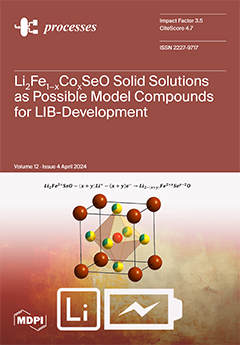Hot air-assisted radio frequency (HARF) is considered a rapid heating process. In order to improve the circular economy of agricultural byproducts, this study used different proportions of HARF stabilized rice bran (R) from milling rice, HARF dried ginseng residue (G) from ultrasonic extraction,
[...] Read more.
Hot air-assisted radio frequency (HARF) is considered a rapid heating process. In order to improve the circular economy of agricultural byproducts, this study used different proportions of HARF stabilized rice bran (R) from milling rice, HARF dried ginseng residue (G) from ultrasonic extraction, and peanut residue (P) from HARF roasting and oil extraction as the
Hericium erinaceus solid-state fermented media. Then, the whitening effects of water extracts from media and fermented products were analyzed. First, the surface temperature of 1 kg rice bran exceeded 90 °C after 3 min of 5 kW HARF heating, effectively deactivating lipase. The combinations of 1 kg of rice bran with 0.5, 1, 1.5, and 2 kg of ginseng residue (85% moisture content) were dried using 5 kW HARF. Each of the drying rates was about 27 g/min, and the drying periods were 14, 30, 46, and 62 min, respectively, which were used to reduce the moisture content below 10%. Compared to traditional air drying for ginseng residue, HARF drying may save up to 96% of time and 91% of energy consumption. Then, the ratio of dried R, G, and P was 4:1:1, mixed with 45% moisture as solid-state media for
Hericium erinaceus and 5 weeks of cultivation at 25 °C. In comparison to the control group, the water extracts at 100 µg/mL from media R4G1, R4G1P1, and fermented HER4G1P1 products exhibited tyrosinase inhibition of 29.7%, 52.4%, and 50.7%, respectively. These extracts also reduced the relative melanin area of 78 hpf zebrafish embryos by 21.57%, 40.20%, and 58.03%, respectively. Therefore, HARF can quickly dry agricultural byproducts as media for
Hericium erinaceus solid-state fermentation while also providing a significant whitening effect for cosmetic applications.
Full article





